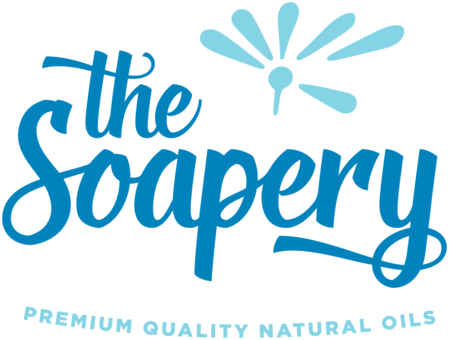Patchouli & Orange Soap Recipe

We love this patchouli & orange soap recipe - the zesty, uplifting freshness of the sweet orange essential oil alongside the deep, woodsy and sensuous aroma of the patchouli. A perfect blend!
Our patchouli and orange soap recipe has been tried and tested (and loved!) by us so that it is ready for you to make at home. It's easy to follow our step-by-step guide, so that even if you haven't tried soap making before, this recipe is the perfect place for you to start.
Firstly, why should you make classic orange & patchouli soap?
Benefits of Patchouli & Orange
Patchouli essential oil is used in aromatherapy to help you feel grounded, soothed and at peace. It can help you feel relaxed and ease stress and anxiety. We've paired these lovely aspects of patchouli with sweet orange essential oil which can also help to lift your mood and relieve stress. A great soap to use in the bath or shower after a long day at work!
Patchouli essential oil is a base note, which helps to fix the scent of the orange essential oil in the soap. Without a base note, citrus essential oils tend to fade very quickly in cold process soap. Click here to read more about essential oil notes.
We've also added ginger essential oil into the blend to help add some background warmth to the scent. It helps support the orange scent and stops it from fading too quickly.
This essential oil blend combined with the cocoa butter creates a chocolate orange type scent, which our makers absolutely loved.
I'm New To Soap Making - Can I Use This Recipe?
Absolutely! We've designed this natural soap recipe so that it has simple, easy to follow steps that can be used by everyone from beginners to professional soap makers.
We've tested it ourselves in The Soapery HQ to make sure that the recipe will give you perfect results every time.
What Skin Type Does Patchouli & Orange Soap Suit?
Because our patchouli and orange soap recipe uses only natural ingredients you'll find it gentle enough to use on all skin types. The natural oils used in the soap are packed with antioxidants and vitamins and will help to moisturise and soothe your skin.
Making natural soap is a great way to try and help sensitive skin. Andy swears by it, and says its the only thing that stops his hands from being irritated. Read more about why Andy started The Soapery here.
Read on for our classic orange & patchouli soap recipe...
Equipment:
- Gloves
- Goggles
- Digital scales
- Digital thermometer
- Stick blender
- Soap mould or DIY alternative (Try our silicone soap moulds for a clean and elegant look!)
- Silicone spatula
- Heatproof bowl
- Plastic measuring jugs, ideally 2x 1L and 1x 2L
Ingredients:
- Olive oil pomace 400g | 439ml
- Cocoa butter 120g
- Coconut oil refined 280g
- Water 240g
- Sodium hydroxide 115g
- Patchouli essential oil 5g | 5ml
- Sweet orange essential oil 15g | 18ml
- Ginger essential oil 5g | 6ml
- Clementine orange mica powder 15g
- Dried orange pieces 10g
Method:

1. Make the sodium hydroxide solution
- Put your gloves and goggles on.
- Open the window, the fumes will be unpleasant.
- Weigh the water.
- Weigh the sodium hydroxide.
- Add the sodium hydroxide to the water, not the other way around.
- Mix well until combined.
- Leave to cool down, it will be hot.

2. Weigh and heat the oils
- Weigh the olive oil, coconut oil and cocoa butter
- Heat over a pan of boiling water, or using short bursts in the microwave
- Mix well until combined
- Remove from the heat and allow to cool

3. Weigh the essential oils and mica powder
- Weigh the orange, ginger and patchouli essential oils
- Mix to combine
- Weigh the mica powder and mix with the essential oils

4. Check the temperatures
- Test the temperature of your melted oils, they should be between 35C and 40C.
- Reheat them or leave them to cool more if necessary
- Test the temperature of the sodium hydroxide solution, it should be between 25C and 40C.
- Leave to cool if necessary, but don't reheat if it's too cool. Just heat the oils a little more to compensate.
- When the temperatures are right, add the sodium hydroxide solution to the oil mixture

5. Blend until trace
- Mix with the stick blender and blend with short bursts.
- Watch for the mixture starting to thicken.
- Test for trace by dripping soap batter on the surface of the mixture. If the drips sit on the surface then your mixture has reached trace.
- When your soap has reached a light trace, add the mica powder and essential oil blend.
- Mix and blend until combined

6. Pour into moulds
- Pour the soap mixture into moulds
- Tap the mould to get rid of air bubbles
- Scatter the orange peel pieces on the top
- Leave on a flat surface for 48 hours before unmoulding

7. Unmould and cure
- Take your soap out from the mould
- Put the bars with gaps in between them, and leave to cure for 4-6 weeks.
Continue Reading
Now that you've learned how to make natural handmade soap, why not continue reading?
- Want to learn how to use pure essential oils for soap making? Take a look at our beginner's guide here
- Interested in natural soap making? Try our nettle soap recipe.
- Don't like using soap on your face? Try our Natural Face Cleanser recipe which contains only five ingredients and will leave your skin fresh and soft.

